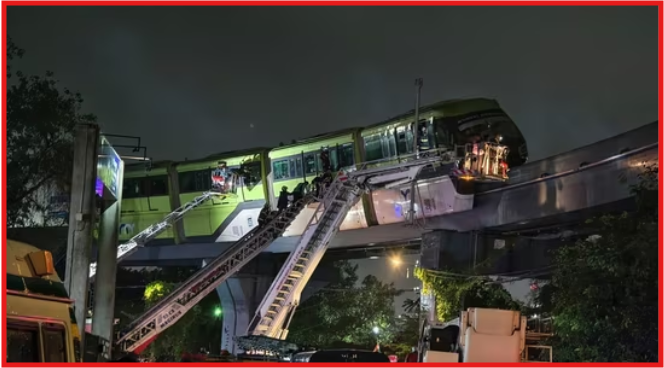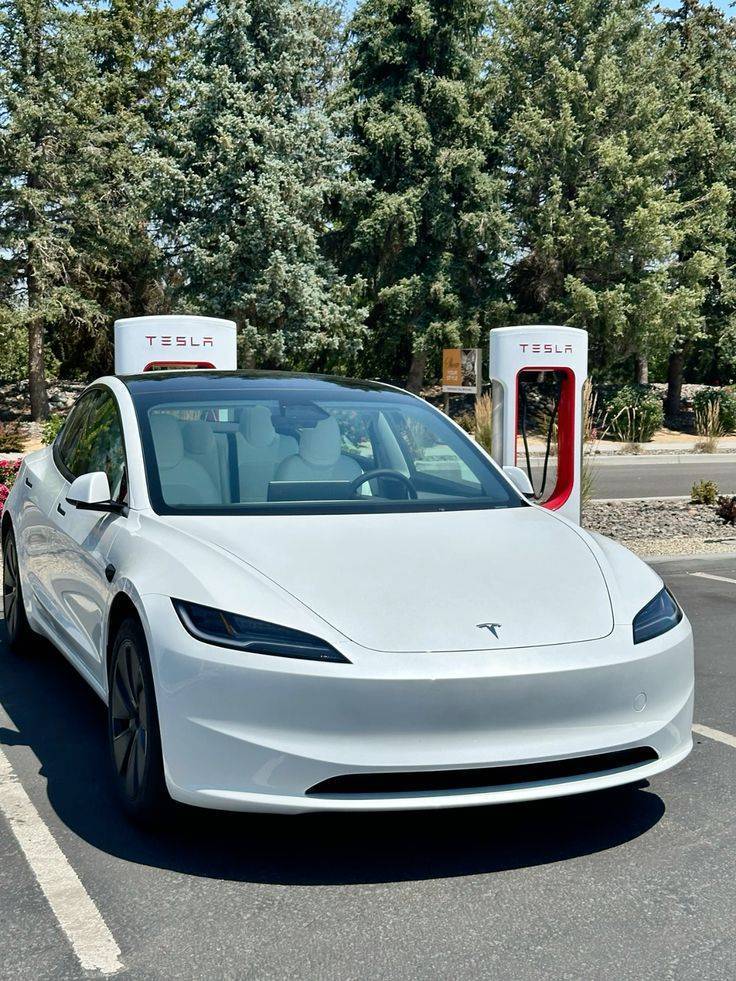Due to a power supply problem, a monorail train became trapped on the line close to Mysore Colony station, forcing passengers to be rescued.

MUMBAI, [19 August 2025] – The Mumbai monorail A crowded train that was purportedly overcrowded with people came to a grinding halt in the middle of its voyage, causing the city’s much-maligned monorail system to descend into further confusion and controversy. to a critical power failure. The incident, which occurred during the evening rush hour amid a spell of heavy monsoon rain, left over 150 commuters stranded 60 feet above the ground, triggering a tense three-hour rescue operation that exposed glaring gaps in the system’s emergency preparedness.
Around 5:45 PM, the 19.54-kilometer Chembur-Wadala-Jacob Circle route was the scene of the drama.The train, travelling from Wadala towards Sant Gadge Maharaj Chowk (Jacob Circle), suddenly lost power and screeched to a halt between the Bhakti Park and Wadala Bridge stations, plunging the coaches into darkness and escalating panic among passengers already crammed inside.
The Ordeal Inside: A “Suffocating” Three-Hour Wait
Eyewitness accounts from inside the stranded coaches paint a picture of claustrophobia and rising anxiety. With the air conditioning systems dead, the interior quickly became hot and stuffy. The relentless Mumbai rain lashed against the windows, adding to the sense of isolation.
“The train just jerked and stopped. The lights went out, and so did the fans. It was completely dark and within minutes, it started feeling like a sauna,” recounted Priya Sharma, a college student who was onboard. “People were initially calm, but as minutes turned into an hour, panic set in. Everyone was sweating, children were crying, and we had no clear information. Our phones were dying, and we felt completely cut off.”
Another passenger, Rohan Desai, a daily commuter, highlighted the issue of overcrowding. “The train was packed like sardines even before it broke down. The monorail is always overcrowded during peak hours, but today it felt dangerous. When it stopped, the fear was palpable. What if there was a fire? What if someone had a medical emergency? There was no way out.”
The Rescue Operation: A Delicate Aerial Endeavour
The first response came from the Mumbai Fire Brigade and disaster management teams, who were alerted around 6:15 PM. Given the train’s elevated position, a standard evacuation was impossible. The rescue turned into a complex, multi-agency effort.
Fire engines with extended turntable ladders were dispatched to the site. However, manoeuvring these large vehicles onto the narrow service roads underneath the monorail track proved challenging. Rescue personnel had to ascend the ladders to reach the train doors.
“The biggest challenge was the height and the weather. The rain made the ladder and the roof of the train slippery. Our first priority was to ensure no one slipped or fell during the evacuation,” said Chief Fire Officer [CFO’s Name]. “We started by evacuating women, children, and elderly passengers first.”
The process was painstakingly slow. Small batches of passengers were guided out of the doors onto the narrow ladder platform and then carefully brought down to safety. Meanwhile, officials from Mumbai Metropolitan Region Development Authority (MMRDA) and MahaMetro, which now operates the system, arrived at the spot to manage the crowds that had gathered below.
Official Statements and the “Overloading” Question
While the immediate blame was placed on a “technical snag” in the power supply system, the incident has reignited the debate over the monorail’s chronic issues, primarily its inability to handle passenger load.
An official from MahaMetro stated, “There was an overhead power supply tripping, which led to the train stalling. Our teams immediately activated the emergency protocols. The safety of passengers is our utmost priority, and we successfully evacuated everyone without any injuries.”
However, the statement did little to address the core allegation of overloading. The Mumbai Monorail, with its small two-coach rakes, has a maximum capacity of around 300 passengers. Commuters and experts have consistently argued that during peak hours, this number is routinely exceeded, putting immense strain on the system’s mechanics and passenger safety.
Transport expert Ashok Datar commented, “This incident was an accident waiting to happen. The system is fundamentally under-equipped for the demand it seeks to serve. Overcrowding stresses every component – from brakes to power systems. Today, it was a power snag; tomorrow, it could be something more severe. A thorough safety audit is non-negotiable.”
A History of Troubles: A System Plagued with Problems
The Mumbai Monorail, inaugurated with much fanfare as India’s first monorail, has been plagued by problems since its inception. It has faced:
-
Poor Ridership: Initially dubbed a “ghost train” due to extremely low ridership, numbers only picked up after the full corridor was operational and fares were reduced.
-
Technical Glitches: Breakdowns, though not always this severe, have been frequent, leading to service disruptions.
-
Operational Handover: The system was originally built and operated by the MMRDA before being handed over to MahaMetro for operations and maintenance, a transition that some critics argue has not been entirely smooth.
Aftermath and the Road Ahead: Demands for Accountability
All passengers were safely evacuated by 8:45 PM. While no physical injuries were reported, many were treated for anxiety and dehydration at the spot. The stranded train was eventually towed back to the depot for a thorough inspection.
The incident has sparked outrage among citizens and civic activists, who are demanding a high-level inquiry.
“The monorail has become a symbol of Mumbai’s infrastructural mismanagement. We pay for a service that endangers our lives. The authorities must be held accountable. We need a public apology and a concrete plan to ensure this never happens again,” said activist Anil Galgali.
An investigation into the occurrence has been launched by the Maharashtra government.The focus will not only be on the specific power failure but also on the broader issues of crowd management, maintenance protocols, and the adequacy of emergency response plans for elevated transport systems.
As Mumbai continues to expand its urban rail network, the monorail debacle serves as a stark reminder that cutting-edge infrastructure is only as good as its reliability and the trust it inspires in the millions who depend on it every day. For the passengers who endured three terrifying hours in the sky, that trust has been severely broken.
Read the full story on Hindustan Times
Explore more updates in our Maharashtra News Section

